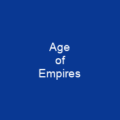Iran: A Land of Ancient Heritage and Modern Progress
Imagine a land where history whispers through the ages, where ancient empires once thrived and modern progress continues to shape its destiny. Welcome to Iran, officially known as the Islamic Republic of Iran, a country that has been inhabited since the Lower Palaeolithic period and is now home to nearly 86 million people.
The Historical Tapestry
Iran’s history is a rich tapestry woven with threads of empires, invasions, and cultural exchanges. The Medes unified Iran as a nation in the seventh century BC under Cyaxares, setting the stage for what would become one of the world’s oldest major civilizations. The Achaemenid Empire, which rose to power in the Iron Age, was the largest empire seen at that time, spanning from the Balkans to North Africa and Central Asia.
Religious and Cultural Shifts
The Muslim conquest of Persia in the seventh century AD marked a significant turning point. This conquest led to Iran’s Islamisation but also preserved its distinct cultural identity. Over centuries, various dynasties and invasions shaped Iran, yet it continually reasserted its national identity and developed as a unique political and cultural entity.
Modern Governance and Challenges
Today, Iran is governed as a unitary Islamic republic with a presidential system. The country has faced numerous challenges, including the 1979 Iranian Revolution that transformed it into an Islamic republic. Since then, Iran has navigated through political, social, and economic changes, balancing its position in regional politics and international relations.
Recent Developments
The election of Mahmoud Ahmadinejad in 2005 brought hardline views to power, while Hassan Rouhani’s presidency in 2013 improved Iran’s diplomatic relations and ended economic sanctions. The assassination of Qasem Soleimani by the US in 2020 heightened tensions between the two nations. Hardliner Ebrahim Raisi succeeded Rouhani as president in 2021, continuing to navigate a complex geopolitical landscape.
Natural Beauty and Diversity
Iran’s natural beauty is as diverse as its history. The country boasts rugged mountain ranges like the Caucasus, Zagros, and Alborz, lush lowland forests near the Caspian Sea, arid desert basins, and salt lakes. Its climate varies from arid to subtropical, with over 8,200 plant species and a rich fauna including 34 bat species, several mammals, birds such as pheasant and eagles, and domestic ungulates like sheep and cattle.
Geopolitical Influence
Iran’s geopolitical influence extends beyond its borders. It maintains strong relationships with countries like Russia, China, and Turkey while facing adversarial relations with the United States and Israel. Iran has significant military capabilities, including a diverse range of weaponry such as ballistic missiles, hypersonic missiles, and indigenous tanks and submarines.
Economic Landscape
Iran’s economy is characterized by its hydrocarbon sector, manufacturing, and financial services. With 10% of the world’s oil reserves and 15% of gas reserves, Iran is an energy superpower. The country aims to diversify its oil-reliant economy through investments in various industries, including biotechnology, nanotechnology, and pharmaceuticals.
Challenges and Opportunities
Despite its economic potential, Iran faces challenges such as water scarcity, high unemployment rates, and budget deficits. The government has taken steps to address these issues, including investing $32 billion in the tourism sector by 2026. Iran’s space agency has achieved significant milestones, launching indigenous satellites into orbit.
Cultural Heritage
Iran is a treasure trove of cultural heritage, with 27 World Heritage Sites and 10th globally for medical knowledge and production index. The country’s rich art heritage includes architecture, painting, literature, music, metalworking, stonemasonry, weaving, calligraphy, and sculpture. Iranian philosophy can be traced back to Old Iranian philosophical traditions, while its mythology reflects on good and evil through stories of extraordinary beings.
Modern Media and Entertainment
In the digital age, Iran’s media landscape is evolving rapidly. The country ranks 17th globally in internet usage, with Google Search being the most widely used search engine. Social media platforms like Instagram are popular among young Iranians, while many mainstream websites remain blocked due to government restrictions.
Conclusion
Iran’s journey from ancient empires to modern progress is a testament to its resilience and adaptability. As it continues to navigate the complexities of global politics and economics, Iran remains a land where history and innovation coexist, shaping a future that honors its past while embracing the present.

You want to know more about Iran?
This page is based on the article Iran published in Wikipedia (retrieved on March 9, 2025) and was automatically summarized using artificial intelligence.





